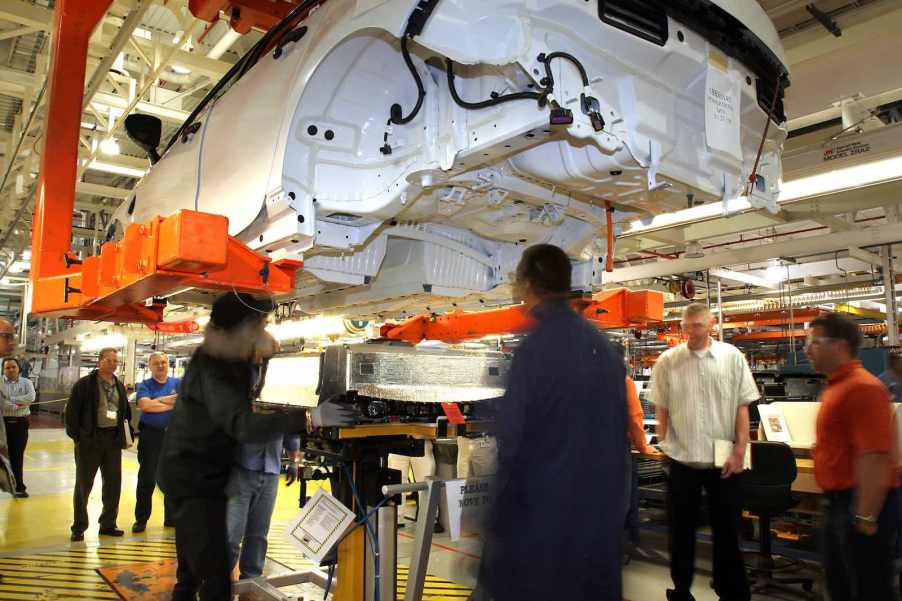
‘EREV’ is the powertrain acronym we’ve been waiting for
I have a confession: we automotive journalists may have failed you, dear reader. We have been taking the easy way out. We refer to far too many different vehicle powertrains simply as “hybrids.” But the acronym “EREV” is growing in popularity and it is honestly the label we’ve been waiting for. An EREV is a completely different vehicle than either a full EV or a regular hybrid.
Hybrids are not a new technology. In fact, Ferdinand Porsche built the world’s first hybrid prototype in 1899. The 1997 Toyota Prius was a century late to the party. But it is very much the car that made hybrids mainstream.
The original Prius powertrain featured an electric motor/generator and a battery. When you hit the brakes, this unit switches into generator mode. It helps slow the car down and charges up the battery in the process. When you tap the accelerator, it pulls power back out of the battery to help launch the vehicle. What’s the point? Not wasting all your momentum every time you hit a red light.
Today, most drivers still think of this powertrain when someone says hybrid. But the problem is that there are a huge range of hybrids available. Take the Prius, for example. Toyota also sells a Prius Prime with a larger battery and a charging port. This is a car you can plug in at home and then drive to work without firing up the traditional engine. This sort of hybrid is often referred to as a “plug-in hybrid electric vehicle” or a PHEV. But even this category can be misleading.
The Prius Prime can reach its top speed using the electric motor alone. But other automakers build and market “PHEVs” that can’t. Even though you can plug these hybrids in to top off their batteries, they are much more like a regular Prius because the electric motor can only assist in launching them from a stand still. Accelerate too quickly, or try to drive too fast (often over just 25 mph) and the internal combustion engine must fire up.
Other automakers market “hybrid” vehicles that are in truth “mild hybrid” powertrains. These have traditional internal combustion powertrains with an electric motor/generator that replaces both the starter and alternator. These hybrid systems essentially smooth out the engines auto start/stop feature by launching the vehicle from a standstill while the traditional engine is starting up. They can also serve to smooth out shifts. But many of these vehicles need their traditional engine to power them above just 5 mph. Examples of mild hybrid systems are Ram’s eTorque and Genesis’ e-Supercharger.
The most exciting hybrid class is the original: the “series hybrid.” This was the powertrain Ferdinand Porsche experimented with in the late 1800s and early 1900s.
Series hybrids are electric vehicles. The only way they can propel themselves is with their electric motors spinning their wheels. They have a battery pack offering electric-only range. But they also have an internal combustion engine which can recharge their battery on the go. Examples of this configuration include the Chevrolet Bolt, BMW i3, and the upcoming “Ramcharger” half-ton truck from Ram.
Vehicle owners can use these “series hybrid” vehicles in much the same way as PHEV vehicles such as the Prius Prime. But they are a different powertrain than the Prius Prime with distinct advantages.
Series hybrids offer several advantages. They feature all the low-end torque of a regular EV. With no transmission or driveshaft, they have fewer moving parts than traditional ICE vehicles, and may prove to require less maintenance. They often have a smaller battery pack than full BEVs, meaning they can be cheaper and lighter, while still offering enough electric-only range for most commutes. But if you need to go on a long roadtrip, you can just fill up the gas tank and go. No need to recharge halfway.
It may not shock you that this is the fastest growing powertrain in China, with sales doubling in one year alone. I expect it will take off in the U.S. soon too.
So far, there has been no good naming convention for this powertrain. But an acronym that’s quickly catching on is EREV for “extended range electric vehicle.” And honestly, I’m just glad it doesn’t contain the confusing and over-used word, “hybrid.”



